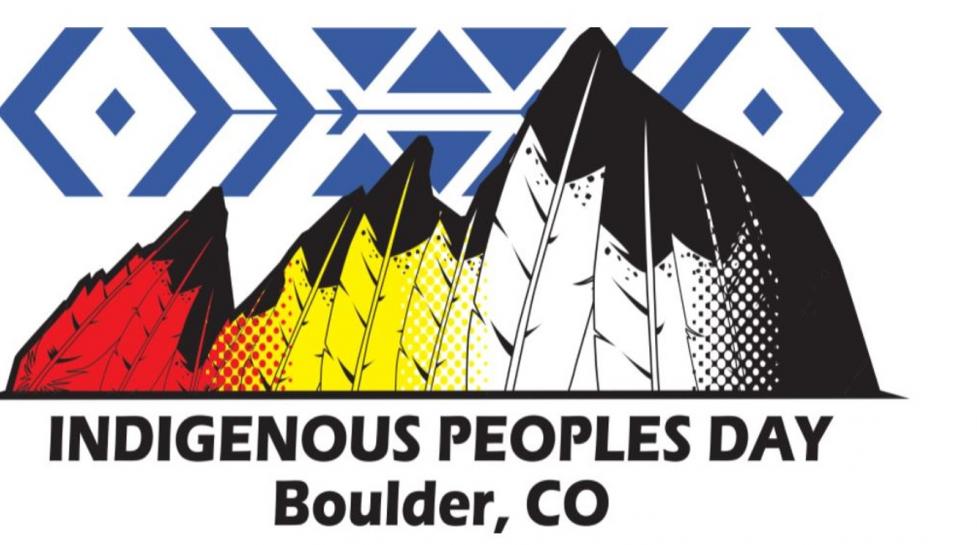For the last six years, the City of Boulder and community organizations have worked together to host annual events and festivities to promote knowledge about Indigenous Peoples and honor the city’s Indigenous Peoples’ Day Resolution.
Related Events
The City of Boulder invites community members to participate in a series of Indigenous Peoples Day events to honor Indigenous Peoples, their cultures and their strong and enduring connections to the Boulder area, which have existed since time immemorial.
For the last six years, the city and community organizations have worked together to host annual events and festivities to promote knowledge about Indigenous Peoples and honor the city’s Indigenous Peoples Day Resolution.
n 2016, in collaboration with community members and the Human Relations Commission, Boulder City Council adopted Resolution No. 1190, a resolution declaring the second Monday of October of each year to be Indigenous Peoples Day. The resolution also guides the city’s ongoing work to correct “omissions of the Native American presence in public places, resources and cultural programming.”
This year, the city is sponsoring five community Indigenous Peoples’ Day events, which will occur from Saturday, Oct. 9, through Monday, Oct. 11.
- The Totonacapan-Nahua Fusion,” Luna Cultura, Art, Science and Culture for Thriving Community: This project is an artistic and cultural event that brings together contemporary and ancestral expressions of Nahua and Totonaco indigenous art. The event will last three hours and will feature music and dance, theater, poetry, herbalism and traditional medicine, textile art and gastronomic tasting.
- “Celebrating Boulder’s Native Peoples,” Right Relationship Boulder. Right Relationship Boulder is planning online workshops with Southern and Northern Arapaho Peoples, whose ancestors were forced out of the Boulder Valley. The presentations will include a cooking demonstration, storytelling by elders, Arapaho language lessons, traditional hand games, and history-telling. They are also planning an online presentation about Fort Chambers, where 100 Boulder County men trained before participating in the 1864 Sand Creek Massacre.
- “Cinnamon Kills First Sessions,” Junkyard Social Club. The Junkyard Social Club is partnering with Denver-based expeditionary performance company Control Group Productions to organize and host two free dialogue and healing sessions by Northern Cheyenne artist, author, documentary filmmaker, traditional beadworker, speaker and advocate Cinnamon Kills First.
- “Indigenous Traditional Dances,” Creative Nations Indigenous Art Market at the Dairy. Creative Nations will present traditional/social dances by groups representing the Arapaho Nation, Apache Nation (AZ) and Dine' Nation (AZ/NM) in the Gordon Gamm Theater at The Dairy Arts Center as part of the 2021 Indigenous Arts Market. All performances are free and open to the public.
- “Traditional Ecological Knowledge Discussion,” Boulder Watershed Collective. This online panel will discuss how Indigenous knowledge and cultural and ecological stewardship can address current local watershed and forest health concerns. This discussion will highlight local and regional Native stewardship practices and how it is impacting conservation efforts. The panel is hosted in partnership with the CU Center for Native American and Indigenous Studies (CNAIS).
For more information about Indigenous Peoples Day, including the event schedule, visit the city’s website.
Recently, the city collaborated with American Indian Nations to rename “Settler’s Park” as “The Peoples’ Crossing” to help fulfill the Indigenous Peoples Day resolution. As the community celebrates Indigenous Peoples Day this year, the city encourages community members to visit “The Peoples Crossing” area and reflect on stories emphasized in current education signs in the area and think about the perspectives that are not included.
The city is also planning to collaborate with representatives from American Indian Nations to incorporate Indigenous perspectives in future education and interpretation materials in “The Peoples’ Crossing” area.
